After analyzing the site of Font del Gos we quickly realized that soil erosion was a significant problem.
The site is a case study of human interception of an ecosystem, a naturally evolved
landscape and water stream disturbed by human doings, causing dysfunction.
Dry, eroded soil is unable to absorb water properly when raining.
This causes a lack of ground cover plants, which additionally worsens the rehydration
abilities and soil health — resulting in an ongoing retreat of the ecosystem.
Bio Berms intend to reverse this process by intercepting runoff
water with swale and berm systems to absorb it into the soil.
This causes better water absorption and distribution, creating a water storage area for drier periods.
Integrating wood chips and manure into the berm supports a quick return of essential
microorganisms in the hydrated soil. The revitalized soil endorses the succession of the forest.
By additionally planting local plants that would naturally occur in the berms
conditions, we catalyze and speed up the self-healing abilities of nature.
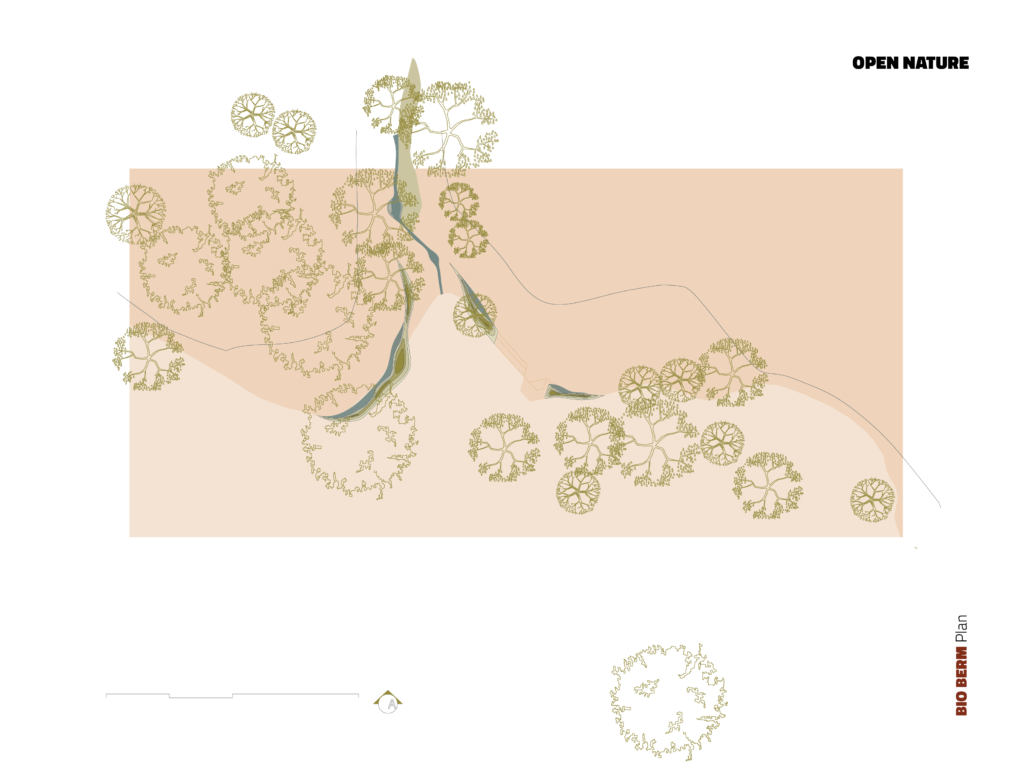
A great benefit of an effort/ project like this is the ability to use only the resources
provided by the site, leaving nothing to waste. Nature is its greatest resource.
All the organic matter collected during the site’s clean-up, including whole dead
trees, branches, stones, and soil, was used to create the bio berms and the swales.
In addition to their environmental benefits, bio berms can provide several social and
economic benefits. By intercepting and managing runoff water, bio berms can help reduce
erosion, sedimentation, and flooding, which can negatively impact nearby communities and
infrastructure. They can also provide opportunities for community involvement and education
and serve as a source of recreation and green space for local residents.
1. Choose location most effective in managing water run off
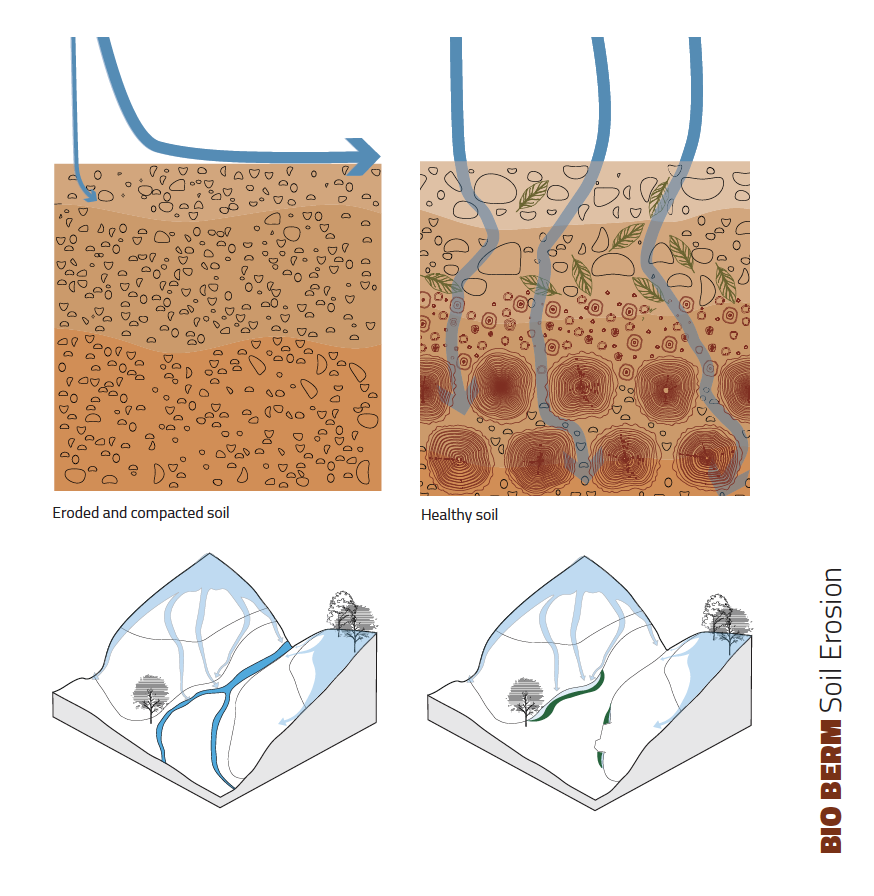
Healthy soil can absorb and retain water more effectively than eroded soil. This is because healthy soil typically contains a diverse range of microorganisms and organic matter, such as humus, which help to create a structure within the soil that allows it to absorb and retain water. In contrast, eroded soil is often lacking in these beneficial microorganisms and organic matter, so it is less able to absorb and retain moisture. As a result, rainwater is more likely to run off the surface of eroded soil rather than being absorbed into the ground. This can lead to problems such as erosion and flooding, as well as reducing the ability of the soil to support plant growth. Therefore, it is essential to return the soil’s health to ensure it can absorb and retain water effectively.
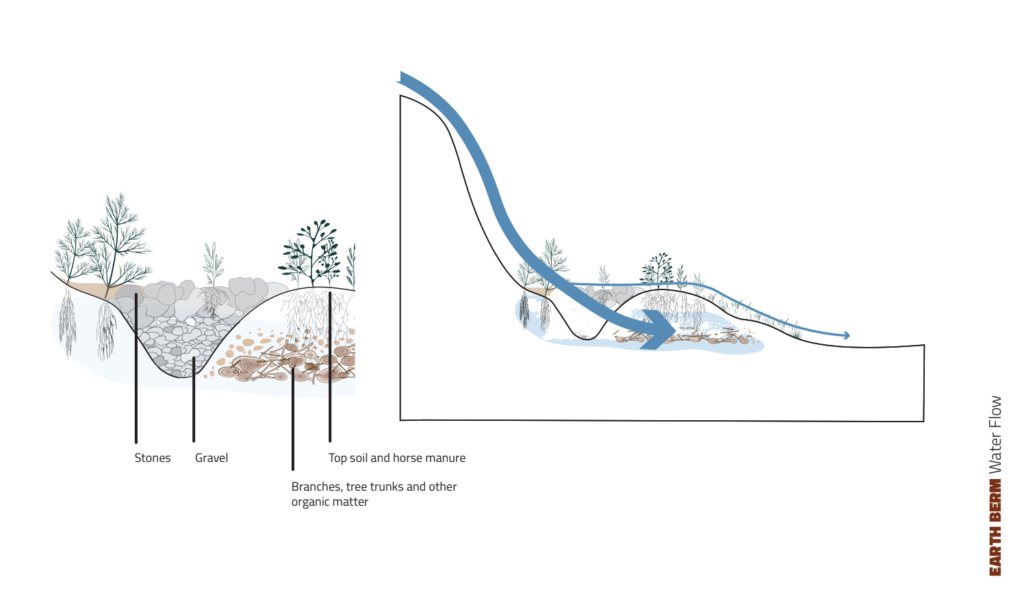
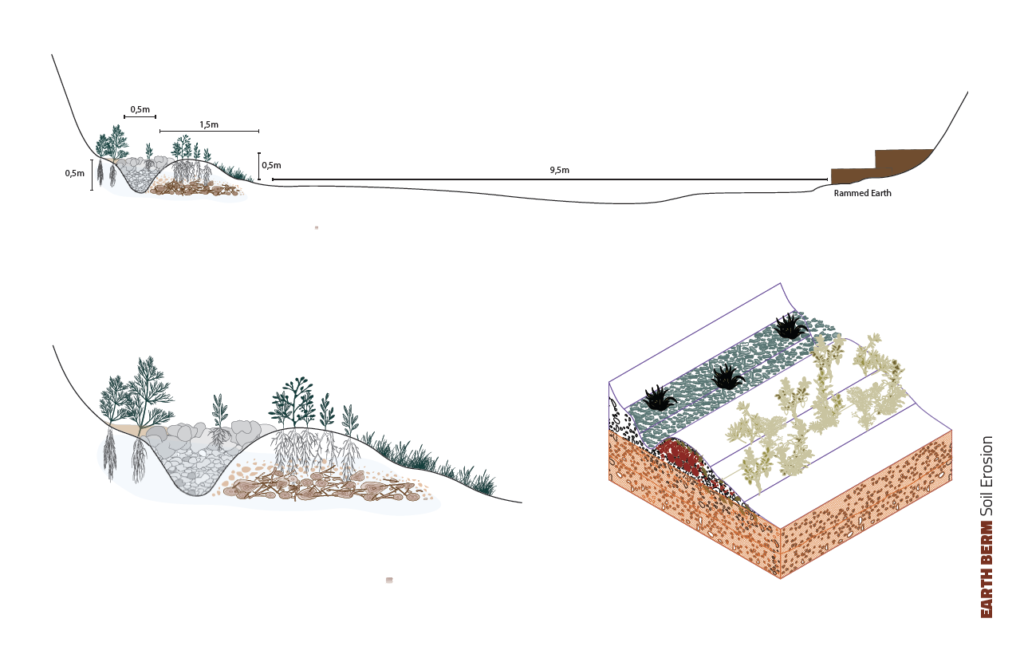
2. Clean site and collect materials
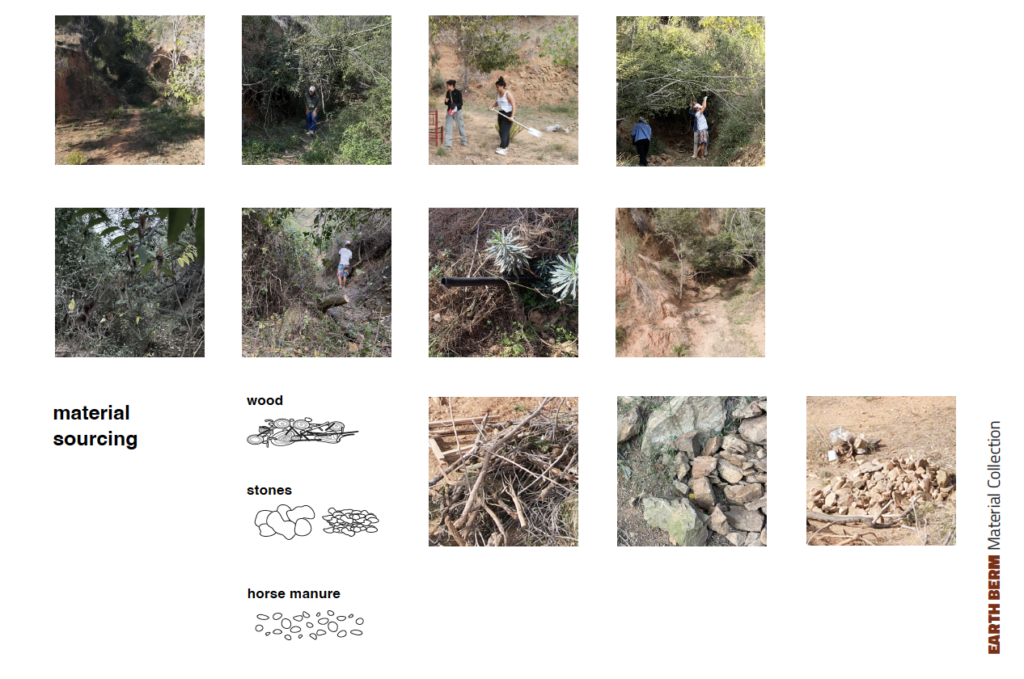
3. Construction of Bio Berm
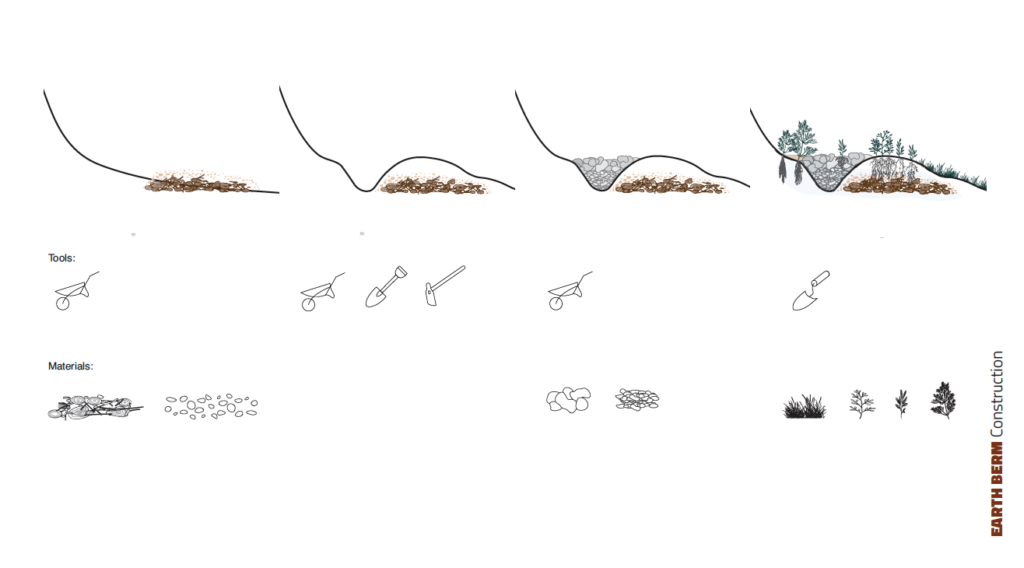
4. Select and plant native vegetation, suited for the environment


